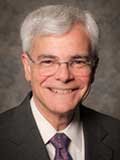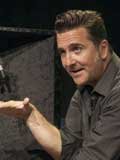SLAS2016 Keynote Presenters
Monday, January 25 – 8:30 am

Michael M. Gottesman, MD, National Cancer Institute
Since 1993, Dr. Gottesman has been Deputy Director for Intramural Research at NIH, where he oversees research and training in the federal laboratories. Dr. Gottesman became Chief of the Laboratory of Cell Biology in the National Cancer Institute in 1990. From 1992 to 1993, he was Acting Director for the National Center for Human Genome Research, and he was Acting Scientific Director of the NCHGR in 1993. His research interests, reflected in over 500 research publications, have ranged from how DNA is replicated in bacteria to how cancer cells elude chemotherapy. He is an elected fellow of the AAAS, the American Association of Physicians, and has been a member of the Institute of Medicine since 2003 and the American Academy of Arts and Sciences since 2008.
Analyzing the Complexity of Drug Resistance in Cancer
Drug resistance is the major impediment to successful chemotherapy of cancer, but the detailed study of mechanisms of drug resistance in cancer cells reveals the daunting complexity of resistance mechanisms. Our goal is to define as many mechanisms of drug resistance in cancer as we can, and then determine the clinical relevance of these mechanisms so that we can develop means to circumvent or target these resistance mechanisms. Mechanisms of resistance can be cell-based, or may be due to the interactions of cancer cells with their host. Our studies have emphasized cell-based mechanisms, including the expression of energy-dependent efflux pumps for anti-cancer drugs such as the ABC (ATP-binding cassette) transporters, ABCB1 (P-glycoprotein, or P-gp), ABCC1 (MRP), and ABCG2 (BCRP, MXR). High throughput screens for drugs that interact with P-gp have revealed a bewildering array of compounds in common clinical use that are either substrates for P-gp or inhibitors. Under normal physiological circumstances, P-gp functions to efflux drugs from the body in the GI tract, kidney, and liver, and serves a barrier function in the brain, placenta, ovary, and testis. Although circumstantial evidence supports a likely role for ABCB1 in multidrug-resistance in clinical cancer, to date use of P-gp inhibitors in the clinic has at best resulted in transient improvements in response to drugs. The reasons for this include: (1) a paucity of in vitro cancer cell models for testing P-gp inhibitors that mimic in vivo expression of drug resistance genes; (2) for cancers that express P-gp at onset (liver, kidney, colon, pancreas), many other mechanisms of resistance are active; (3) for cancers that acquire resistance (breast, ovary, myeloma, leukemias), expression of P-gp only occurs in a minority of tumors; (4) expression of P-gp when it occurs is often associated with expression of other ABC transporters, such as ABCG2 and ABCC1 against which many of the inhibitors are not effective; (5) there are polymorphisms of P-gp that change substrate and inhibitor activity; (6) most of the clinical trials that have been conducted with P-gp inhibitors have not confirmed expression of P-gp in the target tumors; and (7) because of the pharmacokinetic effects of the inhibitors (increased toxicity of many anti-cancer drugs), ineffective doses of chemotherapy or inhibitors have been used. Two approaches that utilize knowledge of P-gp to improve treatment of drug resistant cancers include: (1) More precise molecular analysis of the level and polymorphic form of P-gp (and other ABC transporters) which are expressed in the cancer so that inhibitors can be tailored to the nature of the transporters; and (2) Using P-gp (and other ABC transporters) as targets for therapy with agents that specifically kill ABC transporter-expressing cells—candidate drugs that do this have also emerged from high throughput studies.
Wednesday, January 27 – 3:45 pm

Adam Diedrich Steltzner
Adam Diedrich Steltzner is a renowned aeronautics engineer from the Jet Propulsion Laboratory (JPL). He has worked on several high profile NASA flight projects including Galileo, Cassini, Mars Pathfinder, and the Mars Exploration Rovers (MER). Most impressively, in 2012, Steltzner led a breakthrough team of engineers that invented the pioneering landing system that spectacularly placed the Curiosity rover on the Martian surface.
The Right Kind of Crazy: A True Story of Teamwork, Leadership and High Stakes Innovation
With a rich and varied background, Adam Steltzner had many of the needed skills to lead the landing team for the Curiosity rover. That said, his team would struggle for almost a decade with design challenges and set backs. How did he keep the team focused and on task? What makes a team gel and enables truly innovative thinking? How do team dynamics drive that process forward or inhibit it? And how can organizational culture create an environment for sustained performance? The challenges he and the team faced and the lessons learned from those struggles can help audiences understand how to better lead their high performing teams, manage innovation and drive towards excellence.




















































